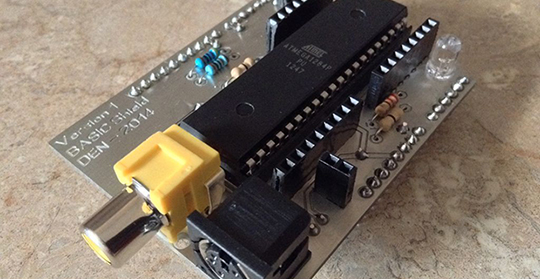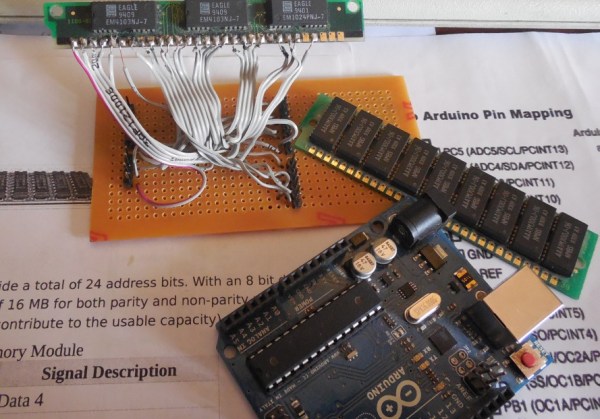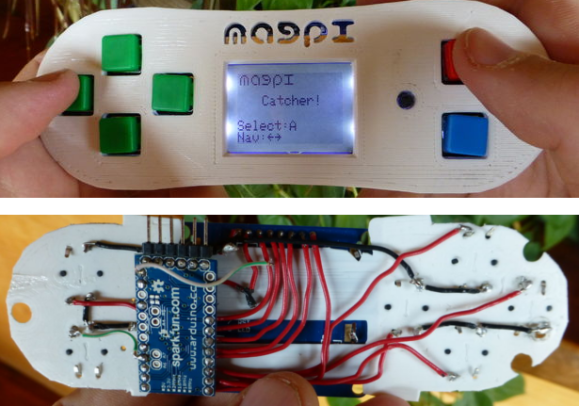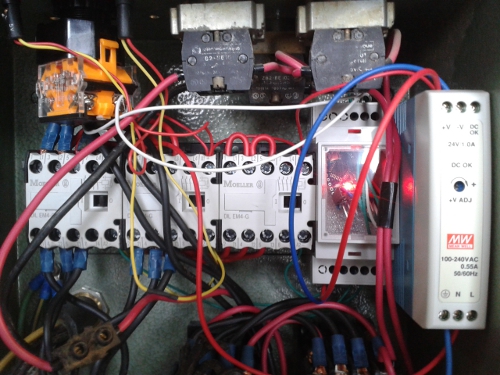
Since [Dan] has started using microcontrollers, he’s been absolutely fascinated by the fact these chips are essentially low performance computers. Once he caught wind of TinyBASIC, he decided he would have a go at creating a simple, tiny computer that’s very simple to the old, tiny, 8-bit computers of yore.
The computer is built on an Arduino shield, using TinyBASIC, the TVout library, and the PS/2 keyboard library. After piecing together a little bit of code, the Arduino IDE alerted [Dan] to the fact the TVout and PS/2 libraries were incompatible with each other. This inspired [Dan] to use the ATMega328P as a coprocessor running the TVout library, and using the capacious ATMega1284P as the home of TinyBASIC and the PS/2 library.
A circuit was put together in Fritzing using minimal components, and a PCB milled out of copper board. After the board was tinned, [Dan] had a beautiful minimalist retro computer with nearly 14kB of RAM free and an RCA display.
Future versions of the build will probably be based around the Arduino Mega, allowing for a TV resolution of 720×480. Also on tap are an SD card slot, LEDs, pots, and possibly even headers for I2C and SPI.



 Reader [pscmpf] really digs the scrolling light look of old marquee signs and as soon as he saw some Christmas lights with G40 bulbs, he was on his way to
Reader [pscmpf] really digs the scrolling light look of old marquee signs and as soon as he saw some Christmas lights with G40 bulbs, he was on his way to 











